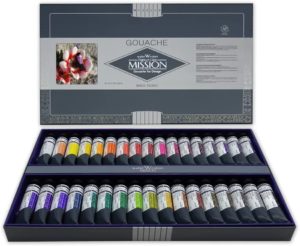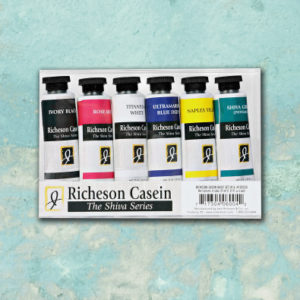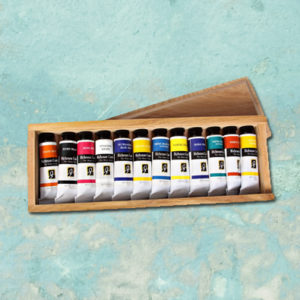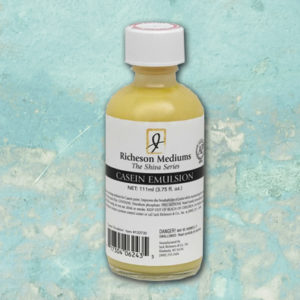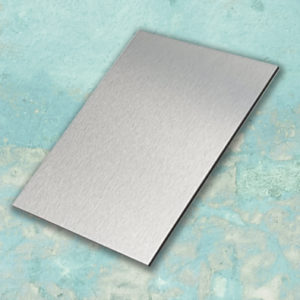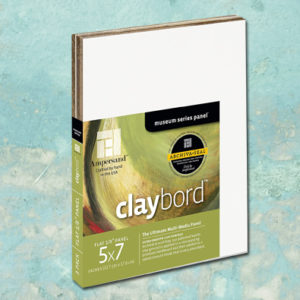Sad news. My Wacom graphics tablet died a few days ago

Mijello Mission Titanium Class Gouache
Mijello Mission Titanium Class
My review of gouache paint from Korean company Mijello Mission
I have Mijello’s watercolors and like them pretty well and saw they had a gouache line now so I decided to give it a try and purchased this set.
Their lightfastness ratings seem higher than normal for some of the colors, which is great… but leaves me a bit skeptical. I decided to make my own lightfastness test to put my mind at ease (no results yet, I just started the test a week ago, I’ll give it a check in a few months and report on my findings). In my tests making swatches, I really enjoyed the flow of these paints. They spread very easily and evenly. They are very vibrant when dry, even in a wash. I tested them out a bit when it came to cracking when dry and re-wettability and they preformed excellently. So far out of all the gouaches I’ve tried (Holbein, M. Graham, Winsor & Newton, Lefranc & Bourgeois) this one seems the best when it comes to (not) cracking and easily re-wetting.
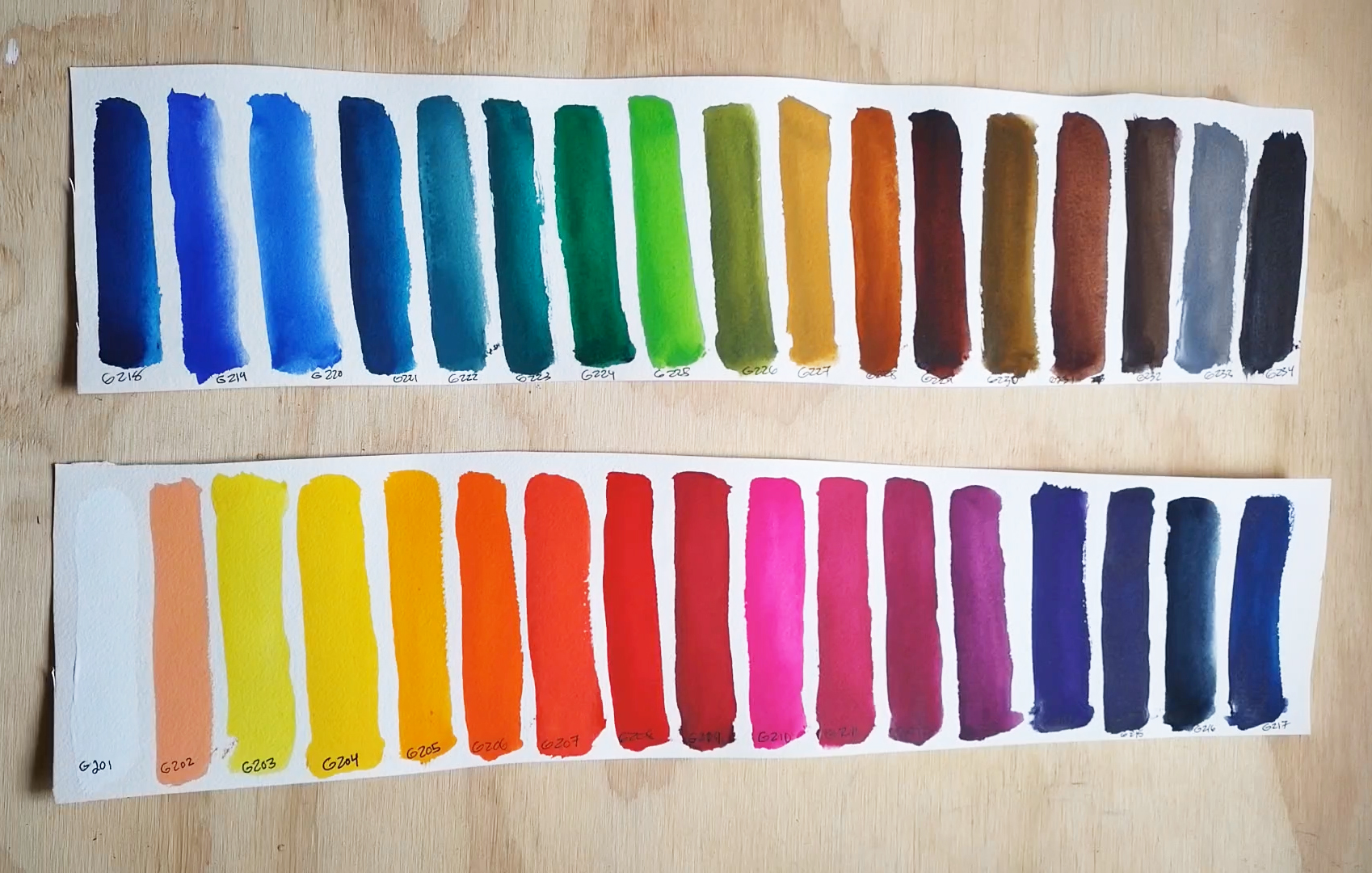
Overall I’m really liking this gouache, but there are a couple of downsides. The binder seems to separate a bit when it comes to some of the colors (not hugely unusual, but this brand seems to do that more than the other professional brands. Once the tubes are slightly less full, one can massage the tube to help recombine it before squeezing some out), also it seems to be a bit thinner constancy as well as shiner than other brands especially with thick application. This could certainly be a big downside for some people since gouache is usually very matte. I mainly purchased this gouache to add to casein since the casein paint that I use (Jack Richeson Shiva) doesn’t have a very big variety of colors but mixes well with gouache. With casein added, that helped reduce the shine of this gouache greatly, so for me it still works. Another downside is that you can only buy these paints in a set (at the moment) and not individually.
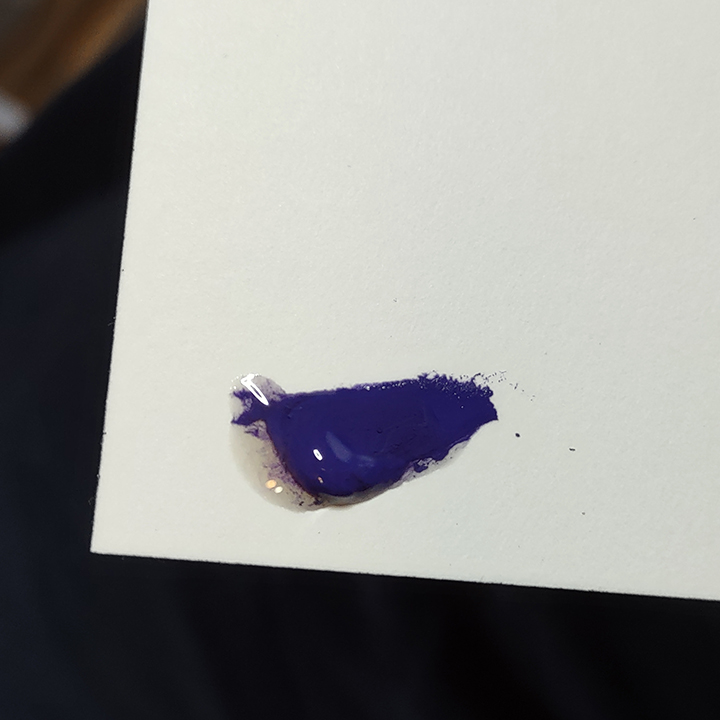
Binder/paint separation example.
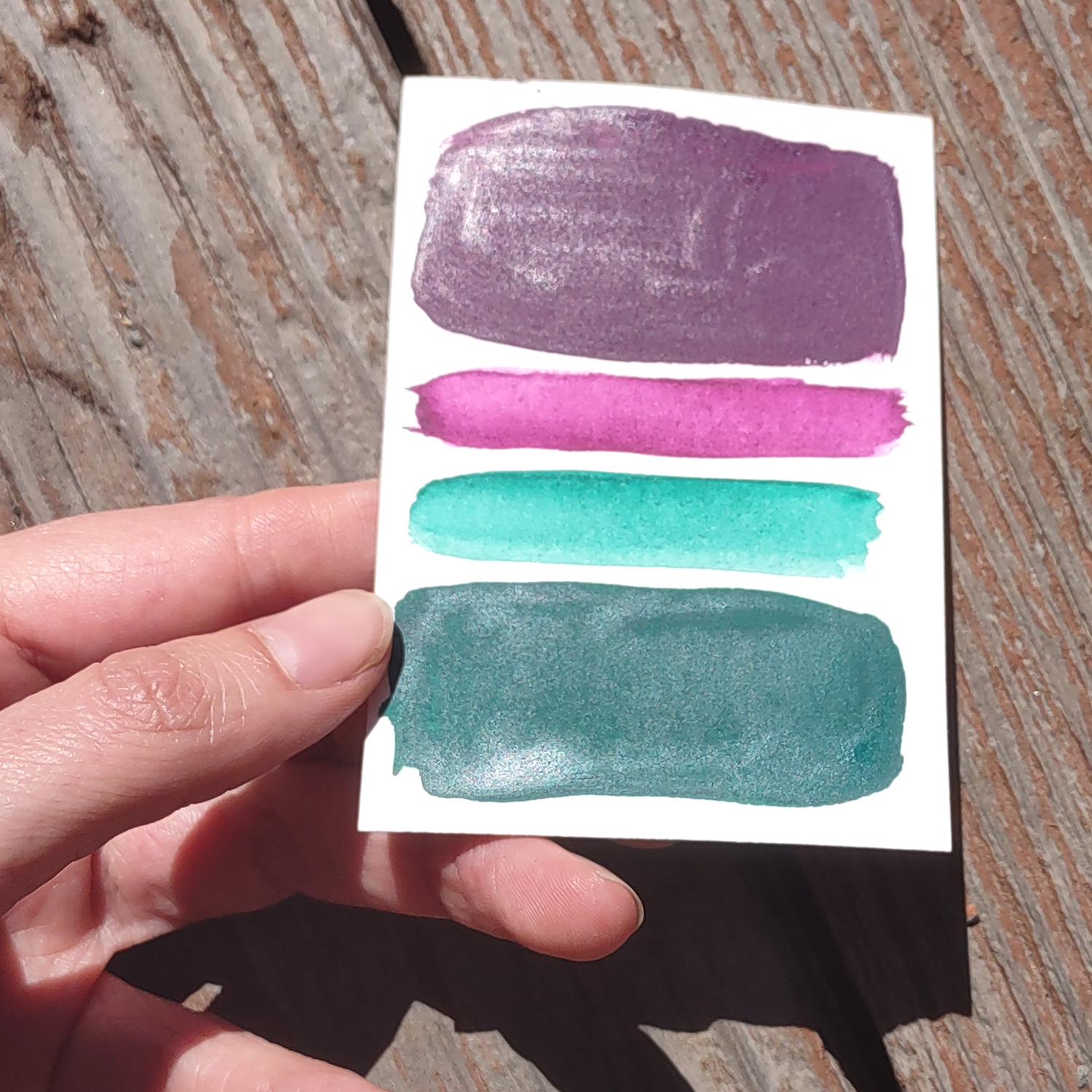
Shininess in thick application example (top and bottom are thick applications, middle lines are more of a wash)
I think this brand would be particularly good if you want to make a gouache travel palette due to it’s super easy re-wettability and non-crumbling nature. It’s very vibrant, opaque and as far as I can tell it’s packed with pigment. M. Graham is probably still my favorite brand, but Mijello Mission Gouache seems like a really good value for the amount of paint you get assuming the price does not significantly increase (comes out to about $4 for a 15ml tube at the time I purchased the set was $145).
If you’re wondering anything else about it, please feel free to comment on this post and I will do my best to answer.
LIGHTFASTNESS UPDATE!
I’ve put the samples in a full sun area for one month. So far, these pigments did really well, I’m very pleased! The only one where I could definitely see some fading issues was the one with only a 2 star lightfastness rating (out of 5) G210 Bright Rose which was to be expected as it’s that classic bright “Opera Pink” color that is always vulnerable to fading, the pigments used in this Bright Rose/Opera Pink color are BV7, BV10 and PR122. I put the samples back in the sun and I’ll check back a few months.
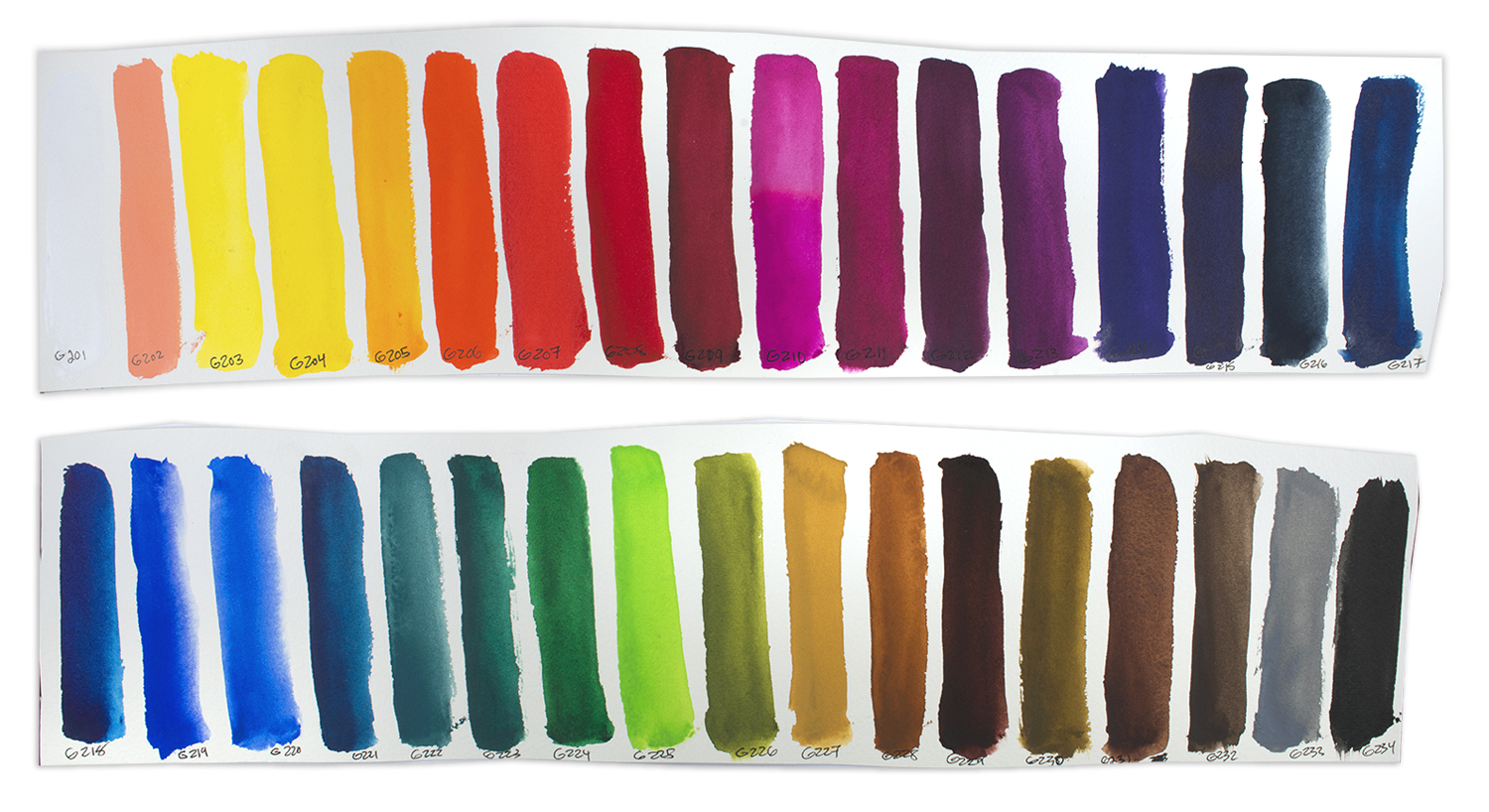

Stop Motion Studio
A Fun Way to Do Artsy Video Content for IG Reels, Youtube Shorts, TikTok Vids and the like

Casein Artist’s Paint
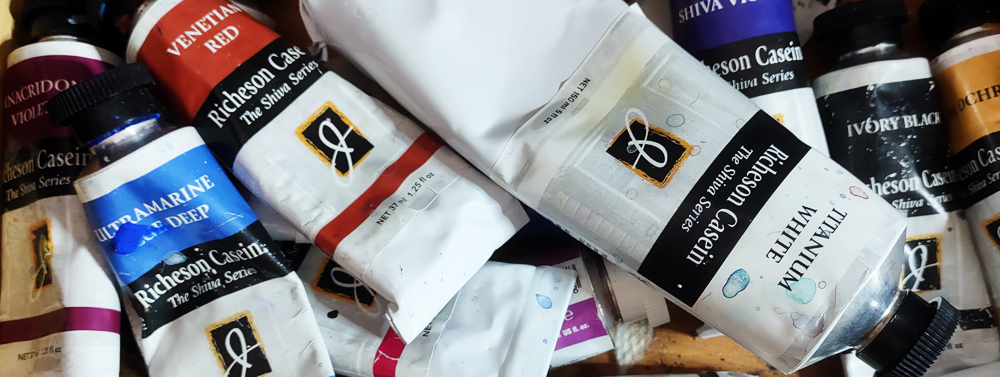
Casein Paint
Casein paint is one of my favorite paints these days. I have mostly replaced my gouache with this milk based water soluble paint. It’s a lot like gouache except for that cures after some time and becomes moisture resistant. This makes it easier to layer. Layering is always part of any of my artworks as it gives them depth. Casein also feels a little thicker than gouache, even when watered down. Jack Richeson makes an artist grade line of casein and that is what I use since the only alternative really it to make it yourself from dairy product or casein powder. I’ll try that some day but this Shiva line is overall really good as well as convenient as it available at most fine art supply stores or Amazon.
With gouache, it’s easy to disturb a paint layer that you’ve already made if you try to paint on top of it since gouache always remains water soluble. With casein, after it’s cured you can put a very wet wash layer on and your previous layers and it will remain undisturbed (as long as you don’t scrub), something which is completely impossible with gouache. That opens up some interesting technique possibilities for me. Curing time varies. Here in the dry desert climate it usually takes a few days to a week to really get water resistant. You don’t have to wait that long every time you want to work on it though if you want to treat it more like a gouache (knowing that if you paint really wet it will disturb the under layer). Sometimes you want that!
The finish is very velvety and matte. I’m likely to varnish it glossy if it’s a piece that I think would benefit greatly from more contrast particularly in the darks. When it cures, it’s very durable and will not scratch easily . To increase sheen and durability on an unvarnished casein painting, you can buff it with a soft dry cloth every now and then. Casein is one of the most stable, long lasting paints there is. Many cave paintings and ancient artworks were painted in casein since it is milk based which is a substance humans have always have had access to since we’re mammals (earliest casein paints were made with human milk!).
It’s also mixable with watercolor and gouache and most other watermedia (acrylic for example, though I don’t know much about that one). This can be nice because Shiva’s line (the only line there is really of artist grade casein) is pretty limited so it’s nice that you can modify your colors with other types of paint. You can also buy the binder for casein, which you can mix with pigments to make any color you want.
Another great feature about casein is that you can erase with ease! Always nice if you are attracted to perfectionism or if you like to work things out by trying this and that in your painting as you go. If the paint has not cured, water will likely be enough to erase dry paint. Once it’s been dry for a few weeks, it may require a solution of 1 parts ammonia to 9 parts water and a bit of scrubbing to remove paint.
What’s best to paint on? You can paint on paper (it’s an excellent paint for sketchbook as it doesn’t dry sticky like acrylic can). Just note, if you apply it too thick on paper it can crack. I do many layers so to stay safe I always paint on a rigid surface like a Masonite or aluminum panel. I always gesso it with an acrylic gesso when I paint on an Aluminum Panel, Ampersand – Claybord is another great option and it requires no prep.
As far as paintbrushes go, I really like my Chinese paint brushes as well as golden taklons that are fairly on the medium/stiff side. I avoid watercolor brushes except for when I’m heavily watering casein down. It’s a thick paint. It’s not good to let the paint dry in the brush, however it doesn’t kill the brush the way acrylic does. A soak in water or the 1 part ammonia, 9 part water solution previously mentioned will help if it has been dry for a while. You’ll have to work it a fair bit but I find I can usually get them mostly back to good working order.

